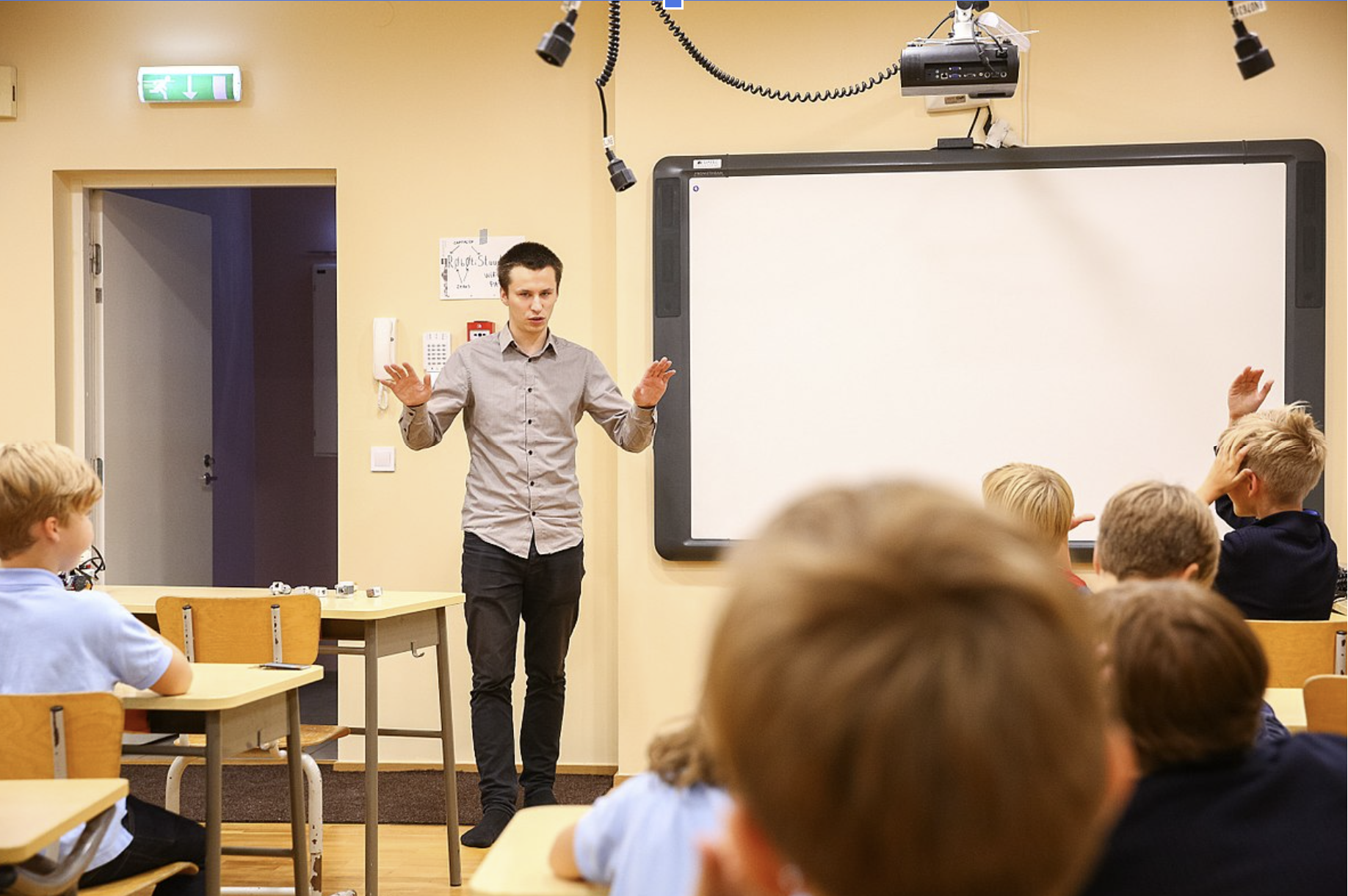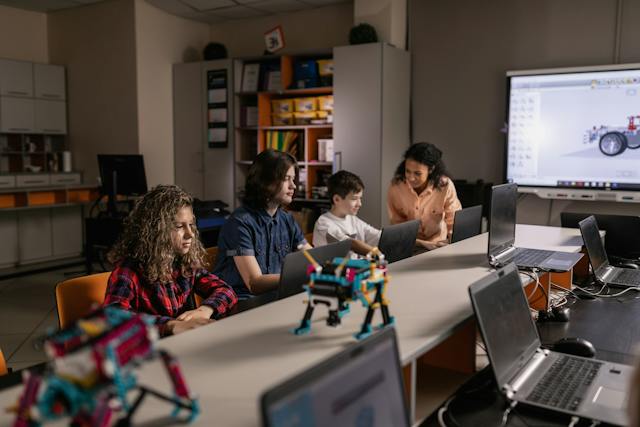In this lesson, we will explore various teaching methodologies that can be used to make coding lessons more engaging and effective.
Teaching coding is not a one-size-fits-all approach. It's important to understand that different students may respond better to different teaching methods. We will cover teacher-led, student-led, hybrid, and group discussion/activity methods.
By the end of this lesson, you will have a better understanding of how to structure your coding lessons to ensure maximum student engagement and learning, and how to adapt your teaching style to the needs of your students.
In the Teacher-Led Methodology, the instructor plays a central role in guiding the entire coding lesson. This approach is particularly effective in introducing new concepts or complex topics in programming.
Here, the teacher actively demonstrates coding principles and techniques using a large screen at the front of the class. This visual element is crucial as it allows students to follow each step in real-time, making the learning process more concrete and less abstract.
Such a methodology is beneficial for maintaining a structured learning environment and ensuring that all students progress at a similar pace. It also allows for immediate feedback and clarification, as students can raise questions or concerns as they observe the coding process unfold.
This method is especially useful for beginner-level students who might need more guidance to grasp fundamental coding concepts.
The Student-Led Methodology shifts the focus from the teacher to the students, fostering an environment of independent learning.
In this approach, the teacher provides students with step-by-step instructions for a particular coding task or project. Students then work through these instructions at their own pace and using their own devices.
This method encourages self-reliance and problem-solving skills, as students learn to navigate through coding challenges independently. It's particularly effective for reinforcing concepts already introduced in a teacher-led session.
Students have the opportunity to apply what they have learned in a practical setting, deepening their understanding and retention of the material.
This approach also caters to students with different learning speeds, allowing advanced learners to progress faster without waiting for the rest of the class.
Combining the strengths of both teacher-led and student-led methodologies, the Hybrid Approach offers a flexible learning environment tailored to individual student needs.
In this setting, the teacher begins by demonstrating the coding lesson on a large screen for the whole class. Students who prefer a guided approach can follow along with the teacher's demonstration.
Simultaneously, students who feel confident in the topic can work ahead independently, using the provided instructions as a reference.
This method acknowledges the diverse learning styles and paces within a classroom. It allows each student to choose the learning mode that suits them best, whether it is the structured guidance of a teacher-led approach or the independence of a student-led approach.
This hybrid model promotes a sense of autonomy in learning while still providing support and guidance from the teacher as needed.
Group Discussions and Activities offer a collaborative and interactive approach to learning coding. In this methodology, students are divided into small groups or engage as a whole class to discuss coding concepts, solve problems, or work on joint projects.
This approach encourages students to articulate their understanding and share different perspectives on the subject matter. It also fosters teamwork and communication skills, as students must work together to reach a common goal or solution.
Group activities can range from discussing theoretical aspects of coding to collaboratively writing code for a shared project. Such interactions can lead to a deeper understanding of coding principles, as students learn not only from the instructor but also from their peers.
This method is particularly effective in creating an engaging and dynamic learning environment, as it breaks the monotony of traditional lecture-based teaching and allows students to actively participate in their learning process.



.jpg)